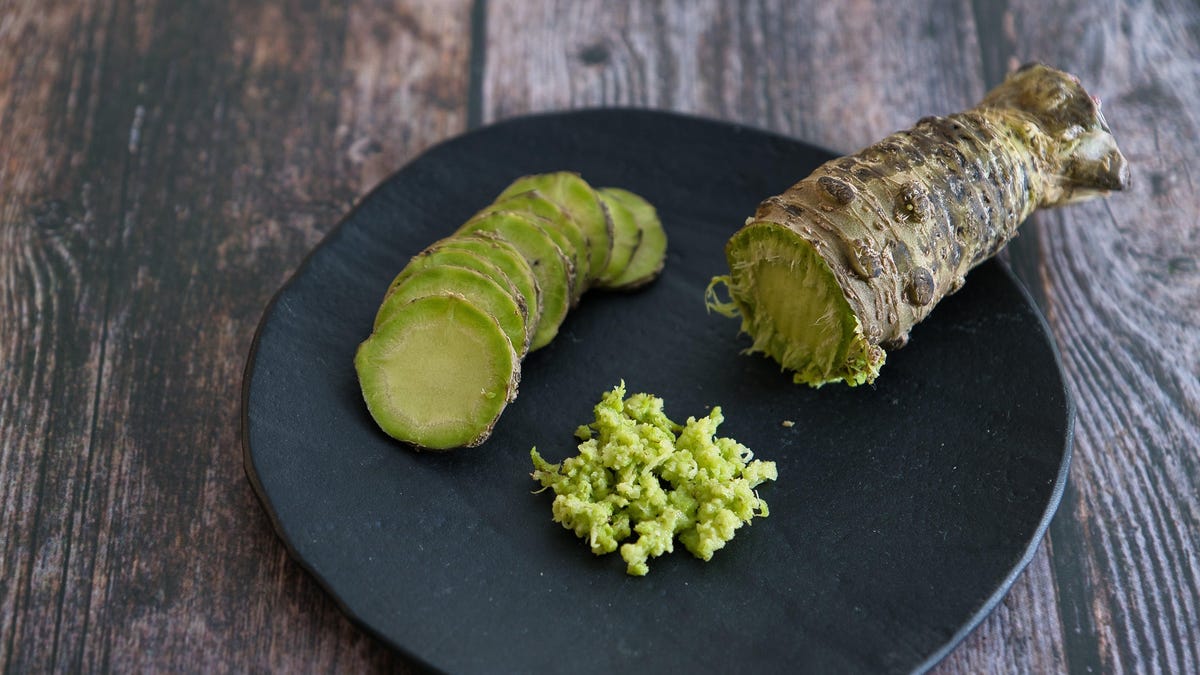Grow Wasabi As a Houseplant

The wasabi that most of us buy from sushi restaurants or the store is not wasabi. This green, slightly bitter powder is often made from horseradish. Higher-end restaurants serve real, unprocessed wasabi, which is valued for its fresh taste, lack of bitterness, and unique spiciness. It has the pungency of horseradish, but a completely different flavor and taste.
My favorite Japanese restaurant has been serving real wasabi for years with a little twist: pickled wasabi stalks chopped and mixed with wasabi paste. This is called Kizami Wasabi. It’s so delicious that only the cost of the root keeps you from eating whole cups of it.
You can sometimes buy wasabi root from online stores or local Asian stores, but usually it’s just the root, no leaves or stems. Thus began my determination to grow it myself in pursuit of the perfect wasabi seasoning.
For years I have been trying to figure out how to plant wasabi next to running water in my yard. I tried to do it in the water outside, but it didn’t work. I tried it in the shade under a tree, same thing. I was googling hydroponic setups when (fortunately) I came across some very simple instructions: just put the plant in a self-watering pot and let it do its thing indoors.
How to grow wasabi inside
I’ve been with my wasabi for a year now and it actually did the trick with very little help from me. All three of my little plants avoid sunlight and only require a sip of water once a week or so. I was in awe of the tiny leaves, so much so that I forgot that the whole point was to collect them. They would just become part of the houseplant family that lives in my living room.
Growing wasabi, especially indoors, is a year-long investment. You can buy plants online , but I was lucky enough to stumble upon them at a local nursery. It will take at least a year for the plants to grow large enough to harvest, after which you divide them, take what you need, and repot what you don’t use.
While instructions for hydroponic setups are all over the internet, all I’ve used is well-draining soil in a 12-inch auto-watering pot . The “self-watering” part means that the soil can draw water from the base, which holds the water in the vessel, so the soil takes exactly what it needs.
I place the pots on the coffee table away from direct sunlight pouring in from the windows. I water them when the leaves have drooped a little, and once a month I give them the slightest amount of fertilizer; It turns out that wasabi root doesn’t need it as much as my other houseplants. My living room is usually within the recommended 50-70℉ range. Wasabi does not tolerate temperatures above 80 degrees well, but neither do I, so the air conditioner keeps us at a frost of 78 even on the worst days.
From the outside, it’s easy to tell when the root is ready to be harvested. The root comes out of the top of the soil and you have a healthy, dense amount of leaves. Inside, where your plant will be a little less lush, you just have to check by feeling the top of the root after a year or two and making sure it’s at least an inch in diameter.
Everything you need to grow and grate your own wasabi:
One of my plants was definitely a little ahead of the others, so I peeled off the top of the root and found that it was about the same size as the roots I bought from the store. Frankly, I was a little sorry that he left.
But not that sorry.
Preparing Wasabi Root
Once you have collected your root, you will see that it is made up of three parts: the root itself, from which branches will grow, the stems, and the leaves at the ends of the stems. If you are going to try repotting it, divide the plant vertically, right through the root. Leave a part, transplant the rest.
Now wash everything, stems, leaves and root. Cut the stems off the root and set them aside. To cook the root itself, you simply peel it, exposing the flesh. Then you are going to rub it. Wasabi paste reaches its peak ten minutes after rubbing, so choose the right moment. There are wasabi graters called oroshigane , which, like ginger graters, separate the fibrous from the pulp, resulting in a paste.
Dry the leaves and stems and roughly cut them into ¼ inch pieces, if you like, into large cubes. Put them in a jar, bag or container and cover with soy sauce. This mixture can stand on the table while marinating; I usually leave it there overnight.
Drain the leaves and stems, but keep the soy sauce, which will be a bit spicy and very tasty. Take grated wasabi root and mix it with soy-soaked leaves and stems in equal parts. I take it one step further and place the mixture on a cutting board and grind everything together to mix it really well. After that, the whole mixture is ready for use. Wasabi doesn’t have much of an expiration date after it’s been grated, so only cook as much as you can eat in one sitting. However, if you are anything like me, it will be quite a lot.